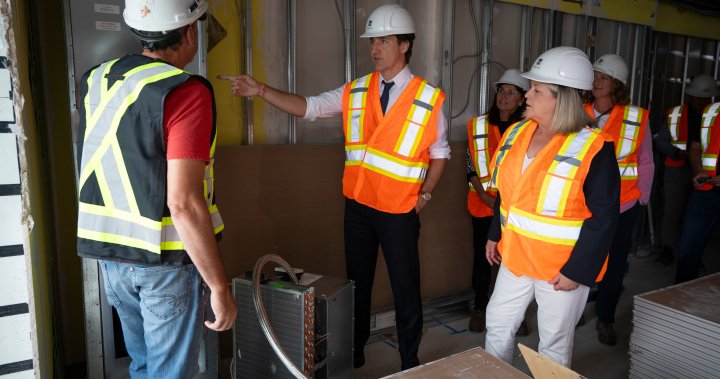The federal government on Tuesday unveiled its plan to phase out heating oil over the next few years and require buildings to have heat pumps installed.
The plan is part of the federal government’s Canada Green Buildings Strategy (CGBS), which aims to make Canada’s buildings net-zero. Oil heating systems will be phased out by 2028, the government said.
“The Government of Canada commits to introducing a regulatory framework that will allow the phase-out of the installation of expensive and polluting oil heating systems in new construction, as early as 2028,” a Natural Resources Canada background document said.
It added that the ban on home heating oil would not include regions with insufficient access to the electricity grid and where standby backup heating fuel is required.
Jonathan Wilkinson, Minister of Energy and Natural Resources, said oil is an expensive inefficient system of heating homes, which is why the government would fund home improvement measures.

“Homes that heat with oil or have poor insulation, ventilation, and heating/cooling systems end up with significantly higher energy bills every month. That’s why we are funding home improvement measures for low- and median-income Canadians, including renters, to make upgrades and save them hundreds of dollars on their energy bills,” he said.
The email you need for the day’s
top news stories from Canada and around the world.
Buildings are the third most polluting sector in Canada, after oil & gas and transportation, government data shows. As of 2022, oil and gas amounts to 31 per cent of Canada’s total emissions, transportation accounts for 22 per cent and buildings account for 13 per cent.
Over 96 per cent of direct emissions from buildings come from space and water heating, government data shows. Heating oil, which is a fossil fuel, is seen as less efficient than heat pumps, which use electricity.
The government said they would work with provinces, territories, municipalities, and other stakeholders to determine whether they can require the installation of heat pumps instead of one-way central air conditioners in all new homes. They will also consider the implications of retrofitting some older homes and buildings with heat pumps.

Wilkinson said in addition to reducing energy bills, the plan would result in more well-paid sustainable jobs.
“Efficient building materials sourced from within Canada not only supports our domestic market and helps cut carbon pollution, but also leverages Canadian manufacturing ingenuity, stimulates market competitiveness, and creates good-paying sustainable jobs,” he said.
Residential buildings account for 47 per cent of emissions from the building sector. Approximately 54 per cent of homes in Canada use fossil fuels for space heating, while 44 per cent use electric-powered equipment.
The government said 20 per cent of all homes in Canada, or three million homes total, are more than 80 years old and around half of all homes in Canada are more than 60 years old.
“The residential buildings stock is aging and many will require retrofits to be energy efficient,” the government’s background document said.





